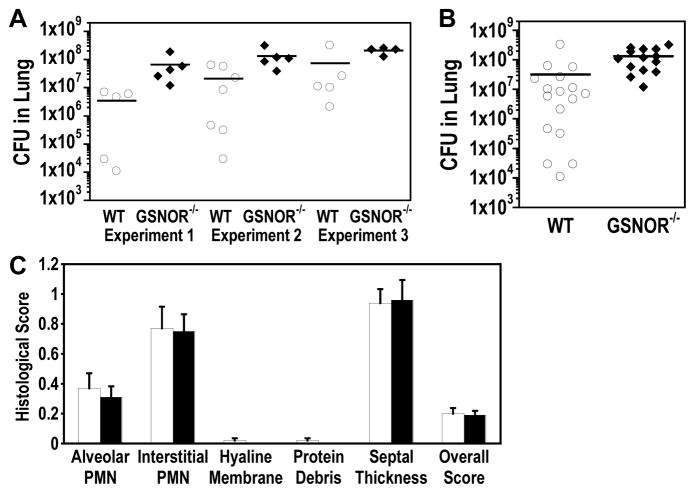Fig. 1.
Increased K. pneumoniae infection in the lungs of GSNOR−/− mice in a pneumonia model. (A) Bacterial loads in the left lung 48 hours after intranasal K. pneumoniae infection of wild-type (WT, open circles) and GSNOR−/− (closed diamonds) mice were quantified by colony forming units (CFU) for each of three independent experiments. (B) Aggregate lung data from the three experiments shown in (A). Each data point represents a single mouse, and horizontal lines represent the group mean. Bacterial loads in GSNOR−/− (n = 23) mice are significantly higher than wild-type controls (n = 17; P = 0.003). (C) Comparable levels of lung injury in K. pneumoniae-infected wild-type (open bars) and GSNOR−/− (closed bars) mice. PMN, polymorphonuclear leukocyte.

